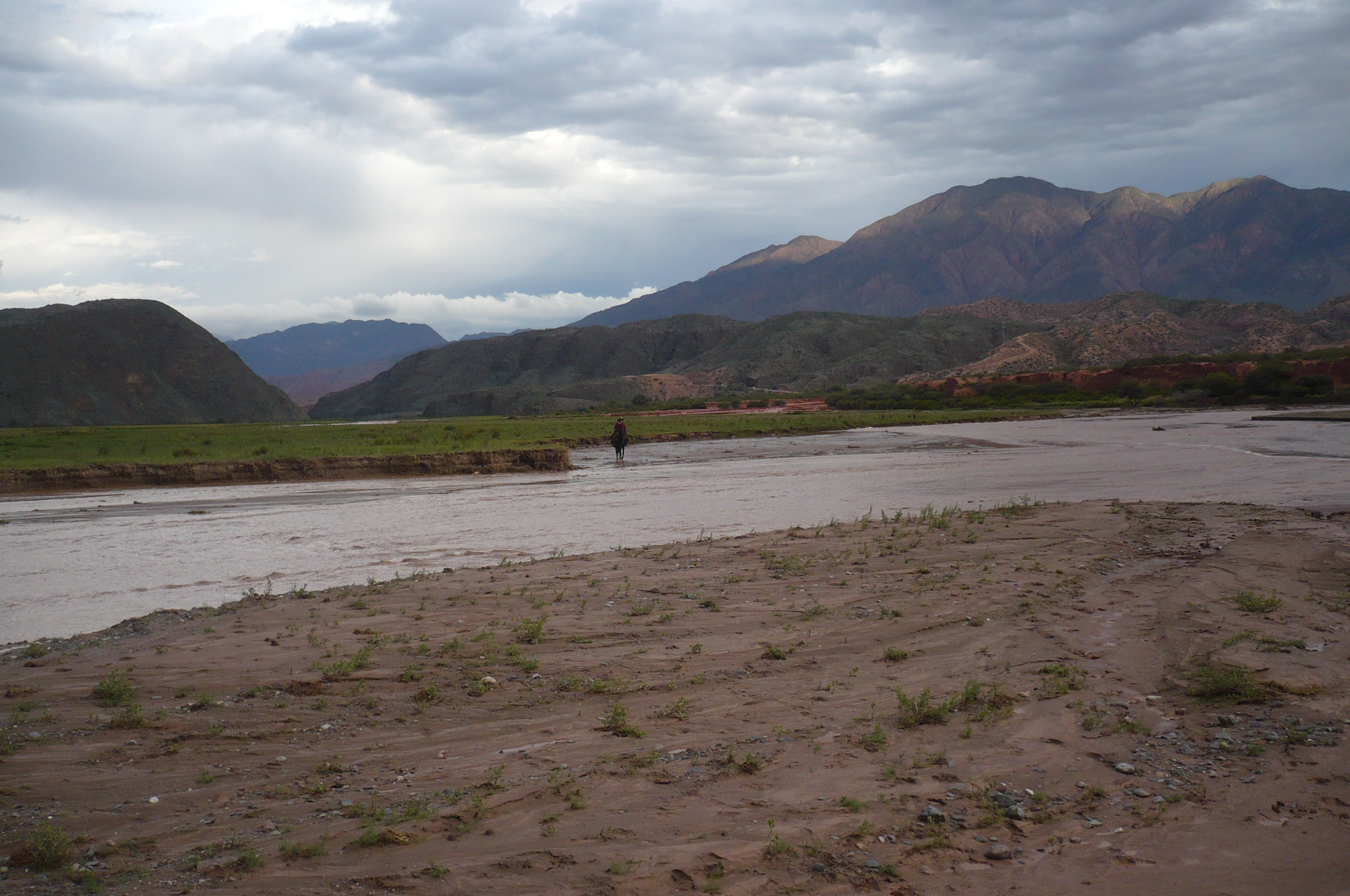|
Cafayate Department
Cafayate is a department located in Salta Province, in northwestern Argentina. Situated in the south of the province and with an area of it borders the departments of San Carlos, La Viña, Guachipas and the provinces of Tucumán and Catamarca. Towns and municipalities * Cafayate * Tolombón * Las Conchas * Santa Bárbara Geography The main rivers in the region are Calchaquí, and Santa María. Both end at the area called ''Las Juntas'' or ''La Ciénaga'', joining at the beginning of the Las Conchas river, which runs in the same-named vallery to the northwest, ending at the Cabra Corral reservoir. Tourism The Departament is known for its vineyards. Cafayate has other tourist sites such as an 18th-century mill built by the Jesuits The Society of Jesus ( la, Societas Iesu; abbreviation: SJ), also known as the Jesuits (; la, Iesuitæ), is a religious order (Catholic), religious order of clerics regular of pontifical right for men in the Catholic Church headquartered in ... [...More Info...] [...Related Items...] OR: [Wikipedia] [Google] [Baidu] |
National Institute Of Statistics And Census Of Argentina
The National Institute of Statistics and Censuses ( es, link=no, Instituto Nacional de Estadística y Censos; INDEC) is an Argentine decentralized public body that operates within the Ministry of Economy, which exercises the direction of all official statistical activities carried out in the country. In February 2013, the International Monetary Fund censured Argentina for failing to report accurate inflation data. Political intervention in the INDEC figures ended, and the IMF declared in November 2016 that Argentine statistics were again in accordance with international standards. Definition The National Institute of Statistics and Census ( es, Instituto Nacional de Estadística y Censos, INDEC) is a public deconcentrated body, of a technical nature, within the scope of Argentina's National Ministry of Economy, and which runs all the official statistical activities carried out throughout the country. Its creation and operation are regulated bLaw 176221 executive order3110/ ... [...More Info...] [...Related Items...] OR: [Wikipedia] [Google] [Baidu] |
Salta Province
Salta () is a province of Argentina, located in the northwest of the country. Neighboring provinces are from the east clockwise Formosa, Chaco, Santiago del Estero, Tucumán and Catamarca. It also surrounds Jujuy. To the north it borders Bolivia and Paraguay and to the west lies Chile. History Before the Spanish conquest, numerous native peoples (now called Diaguitas and Calchaquíes) lived in the valleys of what is now Salta Province; they formed many different tribes, the Quilmes and Humahuacas among them, which all shared the Cacán language. The Atacamas lived in the Puna, and the Wichís (Matacos), in the Chaco region. The first conquistador to venture into the area was Diego de Almagro in 1535; he was followed by Diego de Rojas. Hernando de Lerma founded San Felipe de Lerma in 1582, following orders of the viceroy Francisco de Toledo, Count of Oropesa; the name of the city was soon changed to "San Felipe de Salta". By 1650, the city had around five hundred inhabitan ... [...More Info...] [...Related Items...] OR: [Wikipedia] [Google] [Baidu] |
Argentina
Argentina (), officially the Argentine Republic ( es, link=no, República Argentina), is a country in the southern half of South America. Argentina covers an area of , making it the second-largest country in South America after Brazil, the fourth-largest country in the Americas, and the eighth-largest country in the world. It shares the bulk of the Southern Cone with Chile to the west, and is also bordered by Bolivia and Paraguay to the north, Brazil to the northeast, Uruguay and the South Atlantic Ocean to the east, and the Drake Passage to the south. Argentina is a federal state subdivided into twenty-three provinces, and one autonomous city, which is the federal capital and largest city of the nation, Buenos Aires. The provinces and the capital have their own constitutions, but exist under a federal system. Argentina claims sovereignty over the Falkland Islands, South Georgia and the South Sandwich Islands, and a part of Antarctica. The earliest recorded human prese ... [...More Info...] [...Related Items...] OR: [Wikipedia] [Google] [Baidu] |
Tucumán Province
Tucumán () is the most densely populated, and the second-smallest by land area, of the provinces of Argentina. Located in the northwest of the country, the province has the capital of San Miguel de Tucumán, often shortened to Tucumán. Neighboring provinces are, clockwise from the north: Salta, Santiago del Estero and Catamarca. It is nicknamed El Jardín de la República (''The Garden of the Republic''), as it is a highly productive agricultural area. Etymology The word ''Tucumán'' probably originated from the Quechua languages. It may represent a deformation of the term ''Yucumán'', which denotes the "place of origin of several rivers". It can also be a deformation of the word ''Tucma'', which means "the end of things". Before Spanish colonization, the region lay in the outer limits of the Inca empire. History Before the Spanish colonization, this land was inhabited by the Diaguitas and Tonocotes. In 1533, Diego de Almagro explored the Argentine Northwest, incl ... [...More Info...] [...Related Items...] OR: [Wikipedia] [Google] [Baidu] |
Catamarca Province
Catamarca () is a province of Argentina, located in the northwest of the country. The province had a population of 334,568 as per the , and covers an area of 102,602 km2. Its literacy rate is 95.5%. Neighbouring provinces are (clockwise, from the north): Salta, Tucumán, Santiago del Estero, Córdoba, and La Rioja. To the west it borders the country of Chile. The capital is San Fernando del Valle de Catamarca, usually shortened to Catamarca. Other important cities include Andalgalá, Tinogasta, and Belén. Geography Most of Catamarca's territory of 102,602 square kilometers (2.7% of the country total), is covered by mountains (80%), which can be grouped into four clearly differentiated systems: the Pampean sierras, in the east and center; the Narváez-Cerro Negro-Famatina system, in the west; the cordilleran-Catamarca area of transition, in the western extreme; the Puna, an elevated portion, in the northwest. Located in an arid and semi-arid climate zone, the scarce w ... [...More Info...] [...Related Items...] OR: [Wikipedia] [Google] [Baidu] |
Cafayate
Cafayate () is a town located at the central zone of the Valles Calchaquíes in the province of Salta, Argentina. It sits above mean sea level, at a distance of from Salta City and from Buenos Aires. It has about 12,000 inhabitants (). The town is an important tourist centre for exploring the Calchaquíes valleys, and because of the quality and originality of the wines produced in the area. The town was founded in 1840 by Manuel Fernando de Aramburu, at the site of a mission. In 1863 the Cafayate Department was created, of which Cafayate is the capital. Etymology The Cafayates were a tribe of the Diaguita-Calchaquí group, which, together with the related Tolombón, inhabited the Valles Calchaquíes prior to the arrival of the Spanish Conquistadores. Their language was known as Cacán. Like other Diaguita tribes, they had recently fallen under the influence of the Incas, after a prolonged resistance. They later mounted a fierce resistance to the Spaniards. Even though mos ... [...More Info...] [...Related Items...] OR: [Wikipedia] [Google] [Baidu] |
Tolombón
Tolombón is a village and rural municipality in Salta Province in northwestern Argentina. It is in the Cafayate department. It is 14 km south of . Currently, only 255 people live there. History It is unknown when this village was founded, but it is known that theIncas
The Inca Empire (also known as the Incan Empire and the Inka Empire), called ''Tawantinsuyu'' by its subjects, ( Quechua for the "Realm of the Four Parts", "four parts together" ) was the largest empire in pre-Columbian America. The adm ... conquered it in 1480. Tolombón ...
[...More Info...] [...Related Items...] OR: [Wikipedia] [Google] [Baidu] |
Santa Bárbara, Salta
Santa Bárbara (Salta) is a village and rural municipality in Cafayate Department located in Salta Province in northwestern Argentina Argentina (), officially the Argentine Republic ( es, link=no, República Argentina), is a country in the southern half of South America. Argentina covers an area of , making it the second-largest country in South America after Brazil, th .... References Populated places in Salta Province {{Salta-geo-stub ...[...More Info...] [...Related Items...] OR: [Wikipedia] [Google] [Baidu] |
Jesuits
The Society of Jesus ( la, Societas Iesu; abbreviation: SJ), also known as the Jesuits (; la, Iesuitæ), is a religious order (Catholic), religious order of clerics regular of pontifical right for men in the Catholic Church headquartered in Rome. It was founded in 1540 by Ignatius of Loyola and six companions, with the approval of Pope Paul III. The society is engaged in evangelization and apostolic ministry in 112 nations. Jesuits work in education, research, and cultural pursuits. Jesuits also give retreats, minister in hospitals and parishes, sponsor direct social and humanitarian ministries, and promote Ecumenism, ecumenical dialogue. The Society of Jesus is consecrated under the patron saint, patronage of Madonna della Strada, a title of the Blessed Virgin Mary, and it is led by a Superior General of the Society of Jesus, Superior General. The headquarters of the society, its Curia, General Curia, is in Rome. The historic curia of Ignatius is now part of the attached to t ... [...More Info...] [...Related Items...] OR: [Wikipedia] [Google] [Baidu] |




